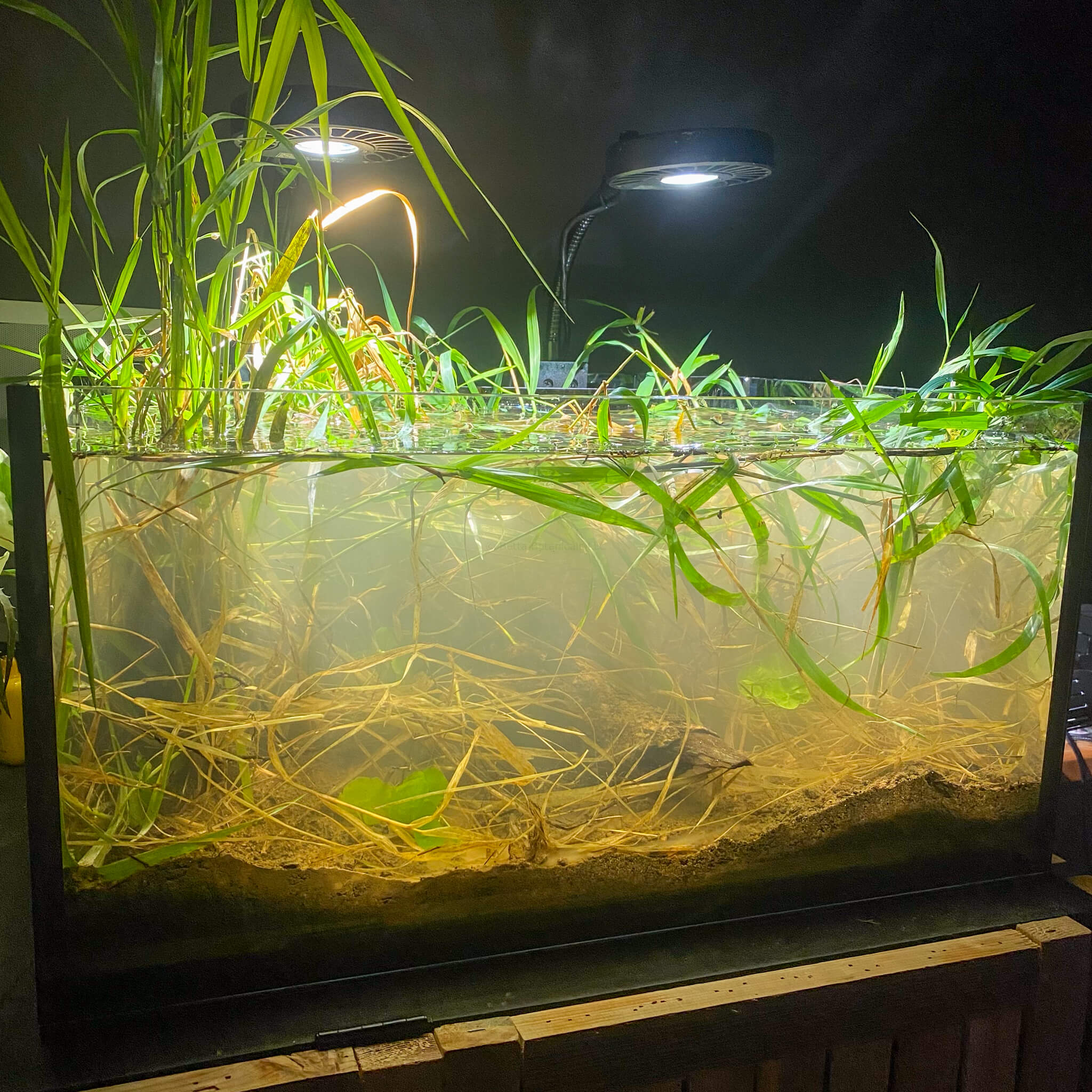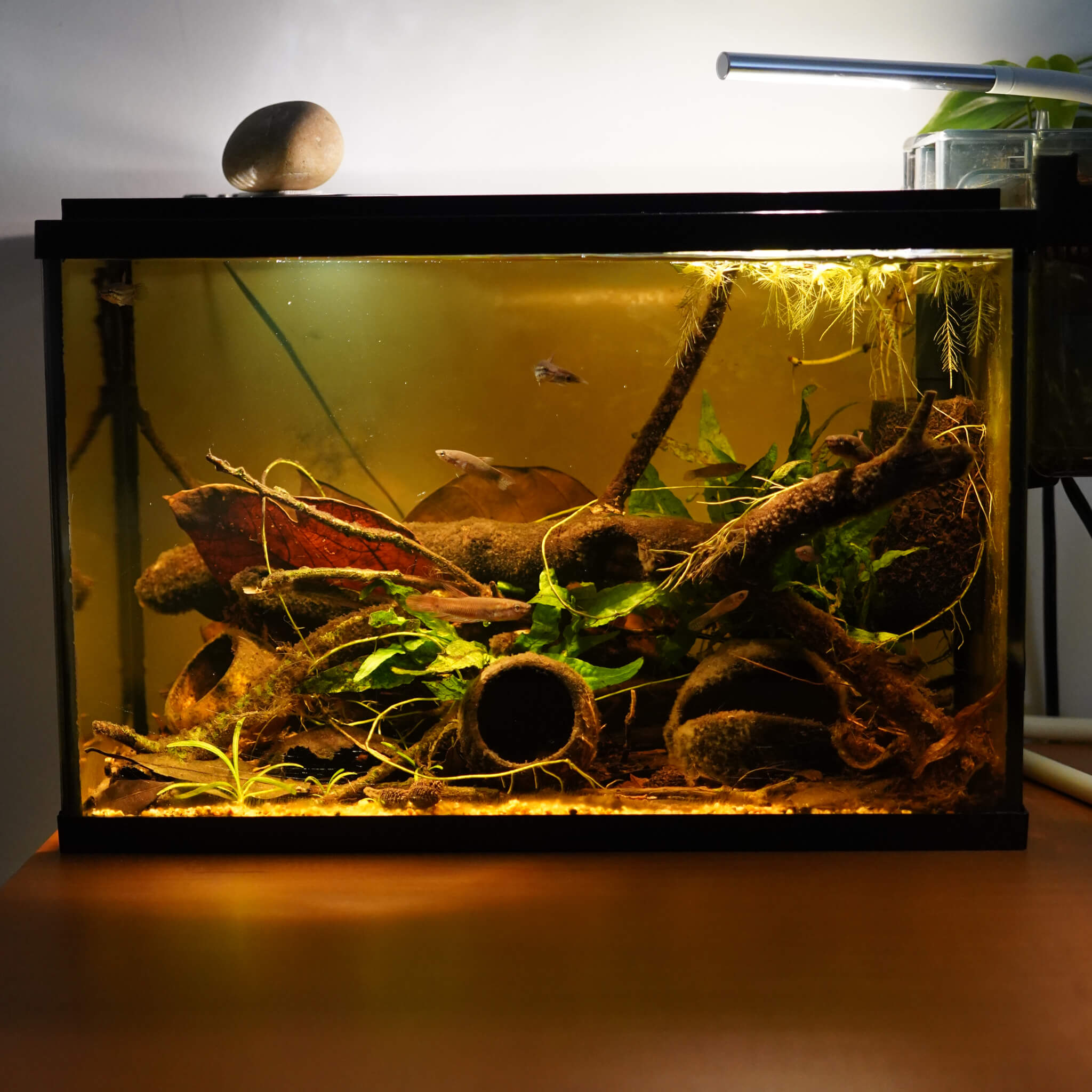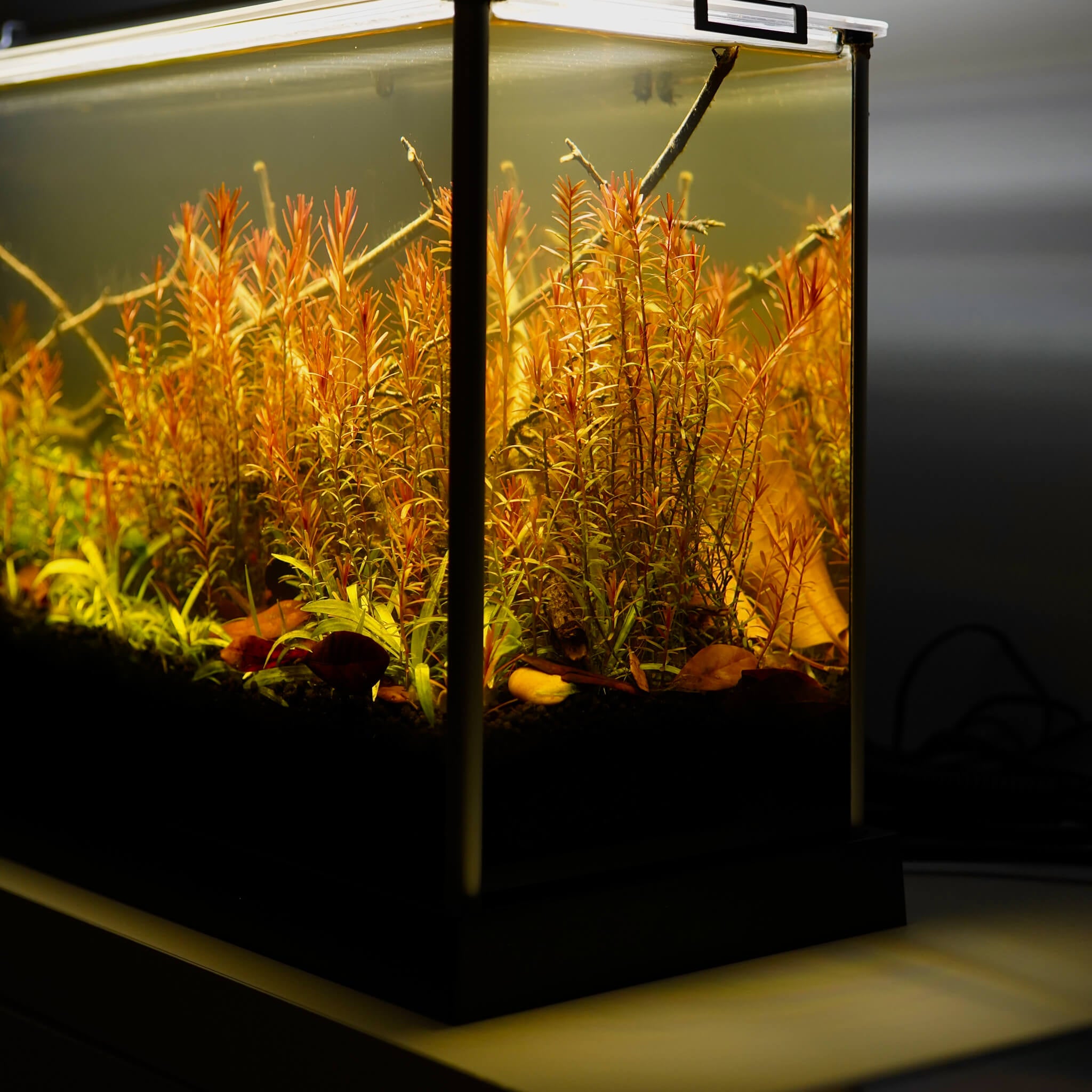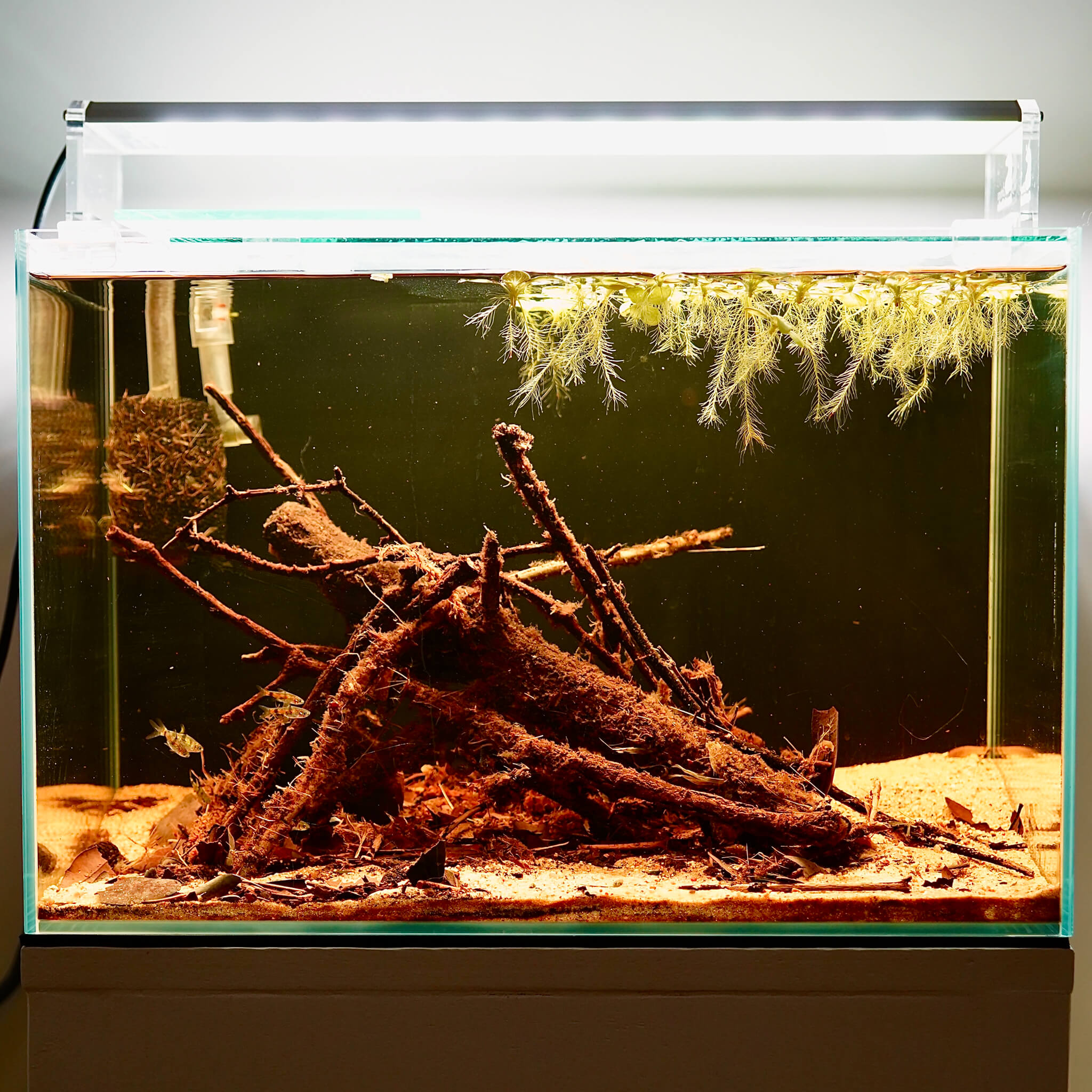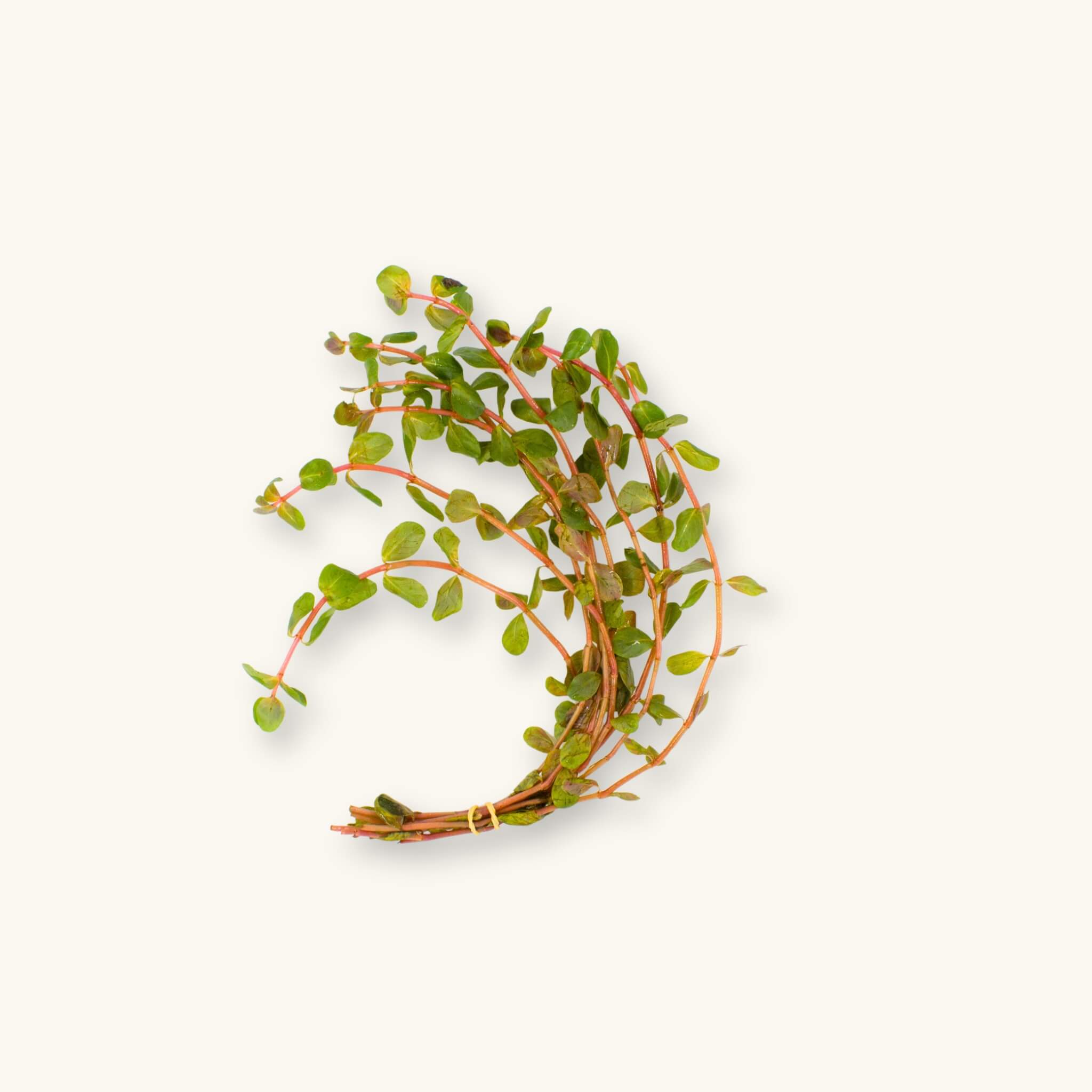
Rotala rotundifolia 'Blood Red'
Rotala Blood Red
Scientific Name: Rotala rotundifolia ‘Blood Red’
Common Name: Rotala Blood Red
Rotala Blood Red (Rotala rotundifolia ‘Blood Red’) is one of the most vivid stem plants in the aquarium world, prized for its deep crimson coloration and compact, upright growth. Rotala's are native to Southeast Asia and this species flourishes under full-spectrum lighting in clearer, low-tannin water.
In the botanical method, blackwater, and biotope aquarium, Rotala Blood Red contrasts against other green plants used in the aquarium, bluring the lines of the earth browns and tans of the botanicals. It looks most natural when planted amongst tangled manzanita branches or oak twigs, with leaf litter piled up at the base of the stems. Since the Botanical Method Aquarium doesn't use CO2 or aquasoils, this plant will not develop its prized blood red coloration, but with root tabs and low amounts of tannins, you can get it pretty close.
Rotala Blood Red also transitions beautifully to emersed growth, thriving in paludariums and Wabi-Kusa arrangements where its foliage becomes even more compact and striking. Its adaptability between submerged and emergent forms makes it an ideal for aquariums looking to recreate ecosystems above and below the water lines.
Caring for Rotala Blood Red in Blackwater Aquariums
Sold As: 1 bunch
Care Level: Moderate; low tint and root tabs
Lighting Requirement: medium, full-spectrum for best red coloration
CO₂: Recommended; enhances color intensity and leaf density
Growth Rate: Moderate to fast
Tank Placement: Midground to background
Native Habitat: Southeast Asia; slow-moving streams
Tint Tolerance: Low; prefers clear to lightly tinted water for optimal color
Note: For the most vivid coloration, maintain clearer water conditions, consistent fertilization, and strong overhead light. In blackwater systems, lower tannin concentrations and supplemental CO₂ can help preserve red tones.
All plants may contain snails or snail eggs, which we keep in our systems for the ecological benefits they provide. Our blackwater aquarium plants are supplied by H2OPlants and shipped according to their DOA policy. Your curated selection will arrive in their packaging, separate from botanicals and merch orders.

Rotala rotundifolia 'Blood Red'
contrast the tint with greenery
While the aesthetic appeal of tinted waters can be quite attractive to us, the recreation of nature—which includes both submerged and emersed plants—is the end goal. Flora helps to improve water conditions, feeding patterns, spawning displays, and territory building.
Aquatic Plant FAQs
DOA Policy
Please ensure that you add a heat pack or cold pack to your orders if temperatures in your area are above 90°F or below 40°F. Click for more info on our DOA Policy.
Are these plants duckweed and snail free?
All Plants may contain snails or snail eggs, small macroinvertebrates, and duckweed. We keep them in all of our tanks for the benefits they provide. We have experienced the presence of small snails, ostracods, daphnia, and beneficial detritus worms.
Are your plants only for tinted water conditions?
Nope! All of our plants will grow perfectly in untinted aquariums that have CO2 and aquasoils, or low-tech planted aquariums. Our selection, though, is optimized for emersed plant growth and low- to medium-tinted water environments.
What is your aquatic plant shipping schedule?
We’re a small company and ship Tuesdays & Thursdays only. Orders placed Wednesday–Sunday → Ship Tuesday. Orders placed Monday–Tuesday → Ship Thursday
Are your plants just for bettas?
Nope. Our aquatic plants are safe for almost all aquariums, terrariums, vivariums, and paludariums. Many of our plants can be grown emersed in filter compartments, vivariums, or incorporated into wabikua.
What are Tannins?
Tannins are natural compounds released by leaves, seed pods, and bark as they decompose in water. They soften water, gently lower pH, and create the characteristic tea-stained tint found in blackwater habitats. But their role goes far beyond color—tannins fuel beneficial bacteria, fungi, and biofilms, which form the foundation of a healthy ecosystem. They also offer mild antifungal benefits and help reduce stress in fish by replicating the natural conditions they’ve evolved in. At their core, tannins are plant-derived antioxidants that connect your aquarium to the same processes at work in wild flooded forests and streams.




